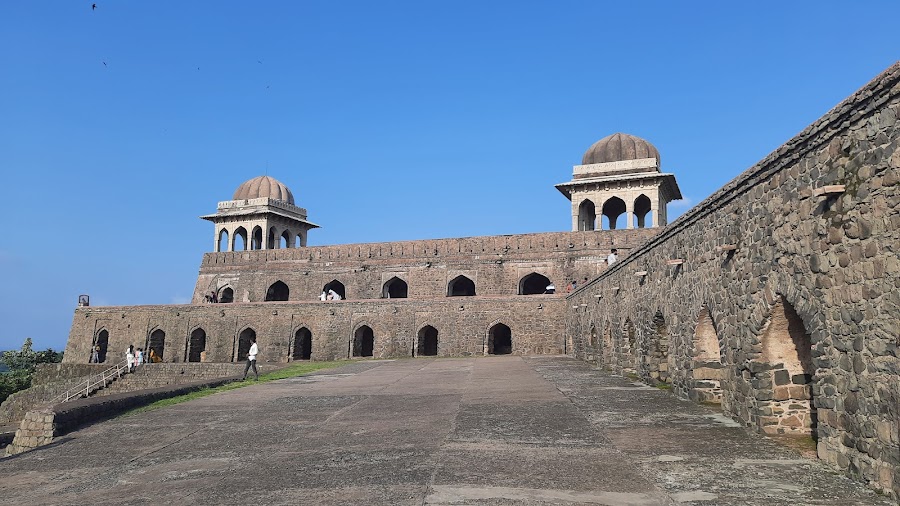
Roopmati's Pavilion
Mandu, India
- Capture panoramic views of the Narmada valley
- Enjoy the sunrise or sunset views
- Explore the architecture of the pavilion
- Learn about the love story of Baz Bahadur
- Photography of the historical monument
Known for:
Description:
Roopmati's Pavilion is a sandstone structure perched atop a hill in Mandu, offering breathtaking panoramic views of the surrounding plains and the Narmada River valley. This historical monument is renowned for its romantic association with Baz Bahadur and Rani Roopmati. The pavilion consists of two rectangular structures with domed pavilions, originally designed as army observation posts. Today, it's a popular tourist spot, especially during sunrise and sunset, providing stunning vistas and a glimpse into the love story of the royal couple. The architecture is simple yet elegant, reflecting the region's rich cultural heritage. Visitors can explore the different levels of the pavilion and soak in the serene atmosphere and captivating scenery.
History:
Roopmati's Pavilion is intrinsically linked to the love story of Baz Bahadur, the last independent ruler of Mandu, and Rani Roopmati, a Hindu singer renowned for her beauty and melodious voice. Baz Bahadur, captivated by Roopmati's singing, persuaded her to leave her village and join him in Mandu. He built this pavilion so that Roopmati could view the Narmada River, which she considered sacred. Legend says she refused to eat unless she could see the river. The pavilion initially served as an army observation post, but later became a symbol of their love. After Baz Bahadur's defeat by the Mughals, Roopmati is said to have poisoned herself rather than surrender to the enemy, adding a tragic end to their romantic tale. The pavilion stands as a testament to their enduring love and the region's vibrant history.